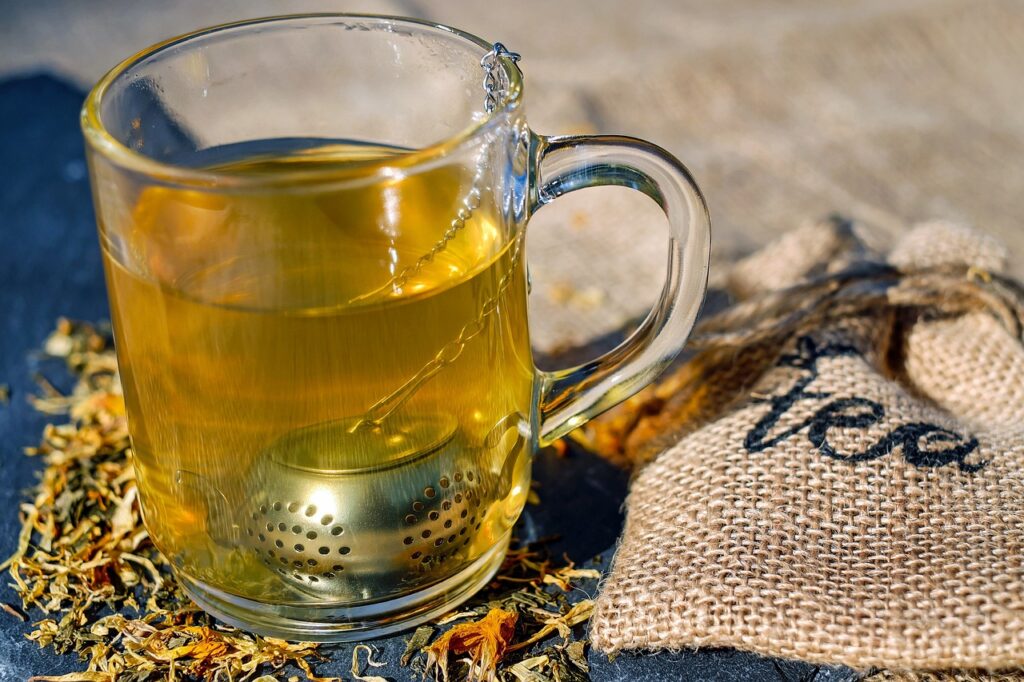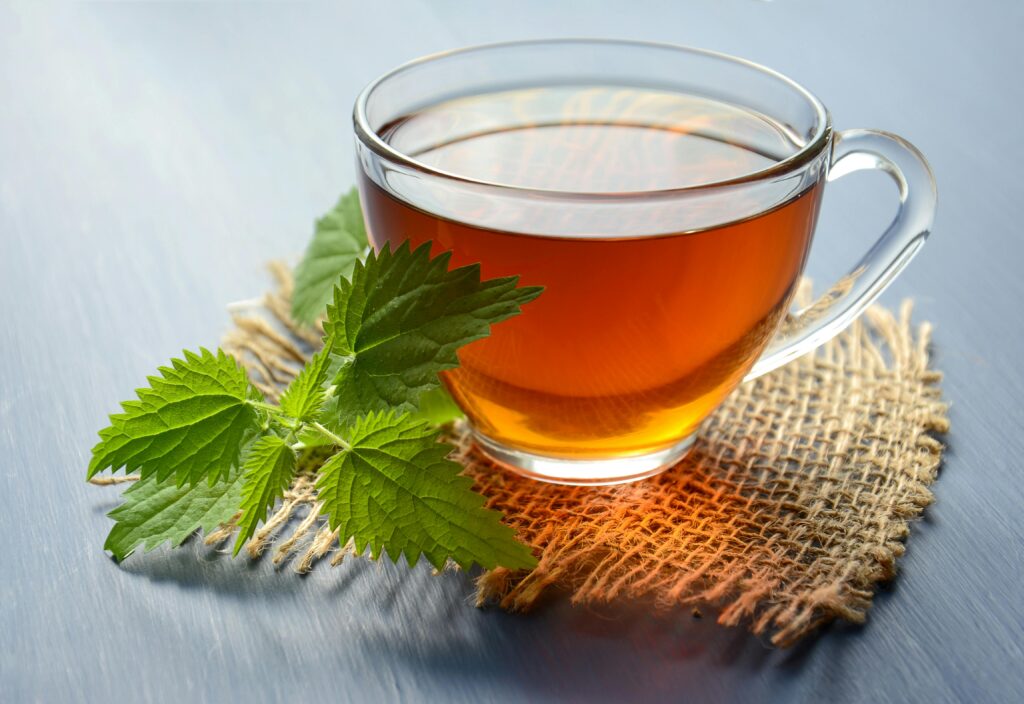Introduction:
This is a paragraph.
Whether you’re considering trying detox teas for the first time or looking to understand if your current tea routine is actually helping, this comprehensive guide will break down everything you need to know. We’ll explore the proven benefits of various tea ingredients, examine common misconceptions, and discuss how certain teas might legitimately support your weight management goals – and which ones to avoid completely.
Understanding Detox Teas
Let me share what I’ve discovered about detox teas after years of both studying and personally experiencing their effects. I remember my first dive into the detox tea world – boy, was I in for some surprises about how these actually work!
The common ingredients in most detox teas read like a botanical garden inventory, but let’s break down what’s actually doing the heavy lifting here. From my research and experience, the most common active ingredients include:
Senna leaves (a natural laxative)
Green tea (for metabolism)
Dandelion root (our friend the diuretic)
Ginger (digestive aid)
Garcinia cambogia (supposed fat burner)
Here’s something crucial I learned about the mechanism of action – and this was honestly a bit of a wake-up call. Most detox teas work primarily through three main pathways:
Increased urination (diuretic effect)
Stimulated bowel movements
Temporary metabolism boost from caffeine
Now, let’s talk about water loss versus fat loss, because this is where I see so many people get confused. During my first week of using a popular detox tea, I lost 6 pounds – but guess what? It was mostly water weight! The science shows that detox teas primarily cause:
– Temporary water weight reduction
– Increased fluid loss through urination
– Depletion of electrolytes
– Little to no actual fat loss
The caffeine content in these teas is something that really caught me off guard. Many detox teas contain significant amounts of caffeine, often from multiple sources like:
– Green tea extract
– Yerba mate
– Guarana seed
– Black tea
This can add up to as much as 200mg of caffeine per serving – that’s about two cups of coffee! The effects I noticed included increased heart rate, jitters, and trouble sleeping when I drank it too late in the day.
The diuretic properties are perhaps the most significant aspect. Through my research, I found that many detox tea ingredients act as natural diuretics:
Dandelion root increases urine output
Nettle leaf enhances kidney function
Green tea has mild diuretic effects
Juniper berries promote water loss
One thing I wish someone had told me earlier – these diuretic effects can actually mask dehydration. Your body might be losing too much water while the tea makes you feel like you’re well-hydrated.
A crucial piece of data from recent studies shows that while detox teas can increase daily fluid loss by 500-800ml, this doesn’t translate to actual toxin removal or fat loss. The liver and kidneys are our body’s natural detoxification system, and no tea can really enhance their function significantly.
Here’s what the research actually shows about long-term use: extended use of detox teas can lead to:
– Electrolyte imbalances
– Digestive issues
– Dependency on laxative effects
– Nutritional deficiencies
I’ve found that understanding these mechanisms helps make informed decisions about using detox teas. They can have a place in a healthy lifestyle, but they’re not the magic solution that marketing often suggests. The key is using them mindfully and being aware of exactly what they can and cannot do for your body.
Remember, any significant weight loss requires sustainable changes to diet and exercise habits. These teas might help you feel lighter temporarily, but they’re not a substitute for healthy lifestyle changes – something I had to learn through both research and personal experience.

Safety Considerations
Let me share what I’ve learned about the safety of detox teas, and trust me, this is something I wish I’d known more about when I first started exploring them. After seeing some concerning reactions in both myself and others, I dug deep into the research to understand the real risks.
Let’s tackle side effect risks first, because this is where things can get pretty serious. During my early experimentation with detox teas, I experienced some unexpected effects that sent me straight into research mode. The most common side effects I’ve found include:
Severe cramping (especially with senna-containing teas)
Dehydration symptoms (headaches, dizziness)
Sleep disruption from high caffeine content
Digestive issues (both diarrhea and constipation)
Mood changes and anxiety
Drug interactions are particularly concerning, and this is something I always emphasize when discussing detox teas. These teas can interact with:
Blood pressure medications (the caffeine can interfere)
Birth control pills (reduced effectiveness)
Blood thinners (some herbs enhance their effects)
Diabetes medications (blood sugar fluctuations)
Heart medications (due to electrolyte changes)
Pregnancy warnings need to be taken very seriously. Through my research, I’ve found that most detox tea ingredients aren’t tested for pregnancy safety. The risks include:
– Increased uterine contractions
– Dehydration risks for both mother and baby
– Reduced nutrient absorption
– Caffeine-related developmental concerns
– Herbal interactions with prenatal vitamins
When it comes to maximum usage duration, I’ve learned that this varies by ingredient, but here’s what research suggests is safe:
Gentle herbs (green tea, ginger): Up to 3 months continuous use
Stronger herbs (senna, cascara): No more than 7-10 days
Full detox blends: Maximum 14 days, then 30-day break
Caffeinated versions: Cycle 21 days on, 7 days off
Quality concerns are a huge issue in the detox tea market. After testing numerous brands, I’ve noticed some alarming trends:
Manufacturing Standards:
– Inconsistent ingredient amounts
– Contamination with unlisted herbs
– Presence of undeclared medications
– Poor quality control in processing
– Misleading labeling practices
One particularly concerning discovery was finding weight loss medications in some imported detox teas – this isn’t just about quality anymore, it’s about safety. The FDA has actually issued warnings about numerous detox tea brands containing hidden drug ingredients.
I’ve learned to recommend some crucial safety practices:
Start with half the recommended dose
Never use multiple detox products simultaneously
Stay extra hydrated (at least 2-3 liters of water daily)
Stop immediately if you experience severe symptoms
Keep a symptom diary for the first week
Something that really opened my eyes was discovering how these teas can affect different people differently. What causes mild discomfort in one person might trigger severe reactions in another. Factors like body weight, metabolism, and existing health conditions all play a role.
The long-term effects of regular detox tea use aren’t well studied, but some patterns have emerged:
– Potential dependency on laxative effects
– Disrupted natural detoxification processes
– Altered gut bacteria balance
– Electrolyte imbalances
– Nutritional deficiencies
Remember, our bodies have natural detoxification systems that work effectively when supported with proper nutrition and hydration. Sometimes the best approach is supporting these natural processes rather than trying to force them with powerful herbs.
Proper Usage Guidelines
I’ve spent quite a bit of time researching and experimenting with detox tea protocols, and I’ve learned there’s definitely a right and wrong way to use these products. Let me break down what I’ve discovered about proper usage that can help you avoid the mistakes I initially made.
Let’s start with dosage recommendations because this is where most people go wrong (myself included at first!). Through careful observation and research, I’ve found these guidelines work best:
Beginners:
– Start with 1/2 cup once daily
– Gradually increase to full cup over 3-4 days
– Maximum of 2 cups daily
Advanced Users:
– 1 cup, twice daily maximum
– Space doses at least 8 hours apart
– Never exceed manufacturer’s maximum dose
Timing suggestions are crucial for both effectiveness and comfort. Here’s what I’ve found works best:
Morning Dose:
– 30 minutes before breakfast
– Never on completely empty stomach
– At least 1 hour before exercise
Evening Dose (if using):
– No later than 4 PM
– At least 3 hours before bedtime
– Not within 2 hours of medications
The hydration requirements really caught me off guard initially. For every cup of detox tea, you need to increase your water intake significantly. My research shows you should:
– Drink 8-12 oz water between detox tea doses
– Maintain minimum 2.5 liters water daily
– Add electrolytes if using for more than 5 days
– Monitor urine color (should be light yellow)
Diet integration has been fascinating to study. I’ve found these teas work best when paired with specific eating patterns:
Pre-Tea Meal Guidelines:
– Light protein source
– Some healthy fats
– Avoid heavy carbs
– No dairy products
Post-Tea Meal Timing:
– Wait 30 minutes before eating
– Choose easily digestible foods
– Include potassium-rich options
– Avoid processed foods
Duration limits are absolutely critical for safety. Based on my research and experience, here’s what you should follow:
First-Time Users:
– 7-10 days maximum
– 30-day break between cycles
– Monitor body response daily
Regular Users:
– 14 days maximum per cycle
– 2-week minimum break between cycles
– Never exceed 8 weeks total per year
I’ve also discovered some important patterns about how to cycle these teas effectively:
Week 1-2: Active detox phase
Week 3-4: Complete break
Week 5-6: Maintenance phase (if needed)
Week 7-8: Extended break
One thing I wish I’d known earlier is the importance of listening to your body’s signals. If you experience any of these signs, it’s time to stop:
– Severe cramping
– Headaches
– Dizziness
– Irregular heartbeat
– Excessive thirst
Temperature of the tea matters too – I’ve found room temperature or slightly warm works better than very hot or cold for most people. This helps with absorption and reduces the risk of digestive discomfort.
Remember, these guidelines aren’t just arbitrary rules – they’re based on how these compounds affect your body’s natural processes. The goal is to support your body’s detoxification systems, not override them. Always start more conservatively than you think necessary, and adjust based on your body’s response.
And here’s something crucial: if you’re using these teas for weight management, they should be part of a broader healthy lifestyle approach. They’re not a magic solution, but rather a tool that can support other healthy habits when used correctly.
Choosing Quality Products
Let me share my journey in learning to identify quality detox tea products. After wasting money on some questionable brands early on, I’ve developed a pretty solid understanding of what makes a detox tea worth your investment.
When it comes to ingredient verification, I learned to become quite the label detective. Here’s what I specifically look for now:
Full Ingredient Transparency:
– Complete botanical names listed
– Ingredient percentages disclosed
– Clear identification of organic status
– No proprietary blends without explanation
– Country of origin for each ingredient
Brand reputation has become one of my non-negotiables. After seeing too many fly-by-night companies come and go, I’ve learned to check:
– Years in business (minimum 5 years)
– Third-party reviews from verified purchases
– Professional certifications
– Customer service responsiveness
– Recall history and resolution
The testing standards really separate the serious players from the questionable ones. Quality brands will show:
Laboratory Testing:
– Heavy metal screening
– Microbial testing results
– Pesticide residue analysis
– Standardization of active compounds
– Batch testing documentation
Let’s talk about red flags because I’ve seen plenty! Here are the warning signs I’ve learned to watch for:
Immediate Red Flags:
– “Proprietary blend” without percentages
– Exaggerated weight loss claims
– No batch numbers on packaging
– Missing manufacturer contact information
– Unusually low prices compared to market
Speaking of prices, let’s break down cost analysis. After comparing dozens of brands, here’s what I’ve found about pricing:
Budget Range ($15-25/month):
– Basic ingredient quality
– Limited testing
– Acceptable for beginners
Mid-Range ($25-45/month):
– Better ingredient sourcing
– More comprehensive testing
– Usually organic certified
Premium Range ($45-75/month):
– Highest quality ingredients
– Full spectrum testing
– Complete transparency
Here’s something interesting I discovered – while premium brands cost more upfront, they often contain higher concentrations of active ingredients, meaning you actually use less per serving. This can make them more cost-effective in the long run.
Quality control standards have become a major focus in my research. The best brands typically follow:
– GMP (Good Manufacturing Practices)
– HACCP (Hazard Analysis Critical Control Points)
– ISO certifications
– Regular third-party audits
– Transparent supply chain documentation
I’ve learned that packaging can tell you a lot about quality too. Look for:
– Airtight sealing
– Light-protective containers
– Clear lot numbers
– Detailed usage instructions
– Professional labeling
One crucial thing I’ve noticed is that reputable companies are usually very open about their testing processes. They’ll typically:
– Provide certificates of analysis upon request
– List specific testing methods
– Share testing frequency
– Explain quality control measures
– Offer traceability information
Remember, just because a detox tea is expensive doesn’t automatically make it high quality. I’ve found some mid-range brands that actually outperform premium ones in terms of purity and effectiveness. The key is looking at the whole picture – ingredients, testing, transparency, and reputation.
Lastly, don’t forget to check expiration dates and storage recommendations. Quality products will have clear guidelines for both, and reputable companies won’t sell products near their expiration date.

Setting Realistic Expectations
Let me share what I’ve learned about setting realistic expectations with detox teas after years of both personal experience and research. Trust me, understanding the real effects versus the marketing hype makes a huge difference in how you approach these products.
Let’s talk about short-term effects first, because this is where most people get excited – and sometimes misled. During my first week using detox teas, I noticed:
Immediate Effects (1-3 days):
– Increased urination
– Temporary bloating reduction
– Mild energy boost
– Digestive changes
– Initial water weight loss
By week one, I discovered the truth about long-term results. The research backs up what I experienced:
Actual Long-term Effects:
– Minimal sustained weight loss
– Temporary digestive changes
– No permanent metabolic boost
– Limited detoxification benefits
– Possible dependency issues
The water weight facts really opened my eyes. Through careful tracking, I found that:
– Initial weight loss is 70-80% water
– Weight returns within 48-72 hours of stopping
– Each pound of glycogen holds 3-4 pounds of water
– Dehydration can mask as “progress”
– Electrolyte balance affects water retention
Let’s talk about sustainable alternatives because this is where real, lasting change happens. After my detox tea phase, I found these approaches more effective:
Sustainable Methods:
– Gradual dietary improvements
– Regular hydration habits
– Consistent sleep patterns
– Regular exercise routine
– Stress management techniques
For lifestyle integration, I’ve discovered some practical approaches that actually work:
Morning Routine:
– Start with plain water
– Light breakfast
– Gentle movement
– Regular herbal tea (non-detox)
– Consistent meal timing
Something I wish I’d known earlier – sustainable weight management isn’t about quick fixes. The research shows that gradual changes lead to:
– More stable weight loss
– Better hormone balance
– Improved metabolic health
– Sustainable energy levels
– Long-term habit formation
Here’s what actually works for supporting your body’s natural detoxification:
Daily Practices:
– Adequate water intake (2-3 liters)
– Fiber-rich whole foods
– Regular physical activity
– Quality sleep (7-9 hours)
– Stress reduction techniques
I’ve found that focusing on these baseline habits produces better results than any detox tea ever did. Plus, there’s solid research showing that our bodies are actually pretty good at detoxifying themselves when we:
– Eat enough vegetables
– Stay properly hydrated
– Get regular exercise
– Maintain good sleep habits
– Manage stress levels
One surprising discovery was how much better I felt when I switched from detox teas to regular herbal teas and proper hydration. The benefits were more subtle but much more sustainable:
– Stable energy levels
– Better digestive regularity
– Natural appetite regulation
– Improved sleep quality
– Consistent hydration
Remember, if your goal is weight management or detoxification, the most effective approach is usually the least dramatic. Focus on:
– Creating sustainable habits
– Making gradual changes
– Supporting natural body processes
– Building consistent routines
– Monitoring progress realistically
The bottom line? Detox teas might have a small place in a broader health strategy, but they’re not the magic solution many hope for. Real, lasting results come from consistent, sustainable changes to your daily habits.
Conclusion:
Remember, your body is already equipped with an amazing detoxification system. The best thing you can do is support it through balanced nutrition, regular movement, adequate sleep, and proper hydration. If you enjoy tea as part of that lifestyle, fantastic! Just make sure you’re choosing products based on scientific evidence rather than marketing promises.
